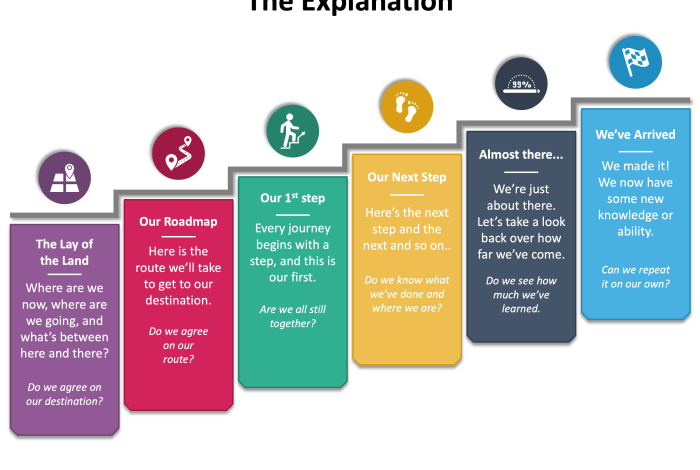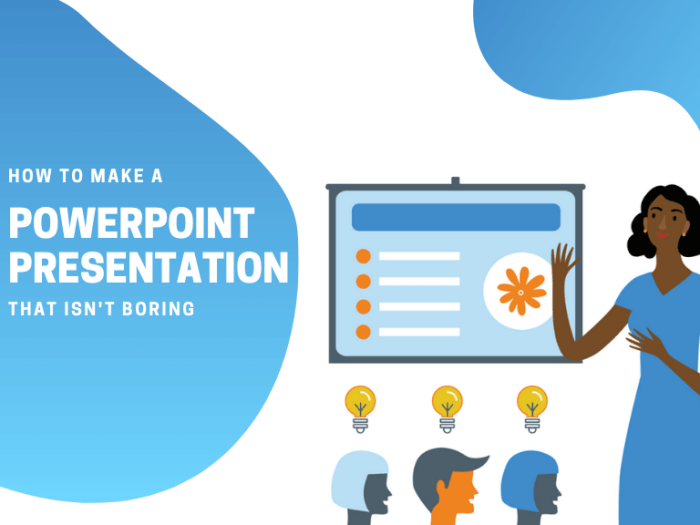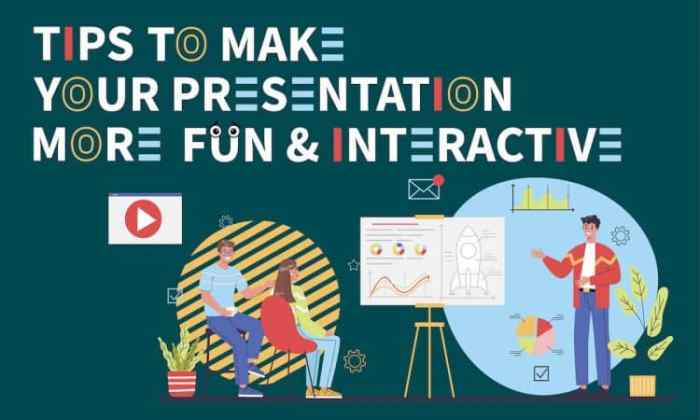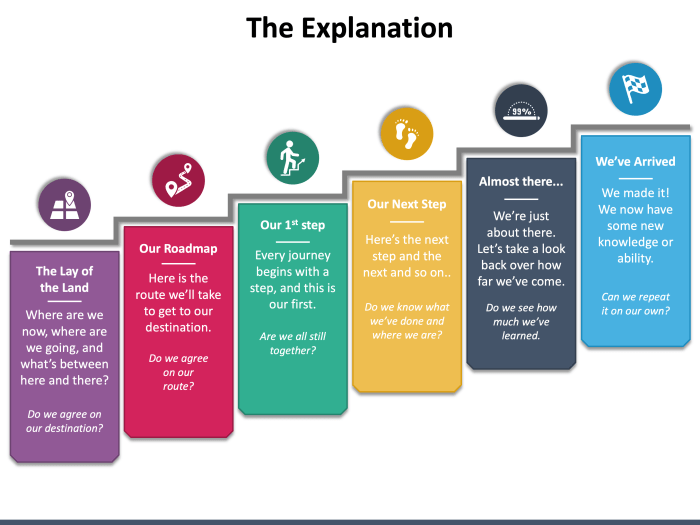
9 Mind Blowing Hacks to Make Your Presentation More Interesting
Ever felt your presentations fall flat? 9 mind blowing hacks to make your presentation more interesting is here to rescue you! We’ve all been there – staring at a screen, trying to keep our audience engaged while our own energy wanes.
But what if I told you there are simple, yet powerful, techniques that can transform your presentations from mundane to mesmerizing? From captivating visuals to interactive elements, this guide is packed with actionable tips to turn your next presentation into a memorable experience for you and your audience.
Imagine your audience leaning forward, captivated by your words, actively participating in your presentation, and leaving with a lasting impression. This isn’t a dream; it’s a reality within reach. With a little creativity and effort, you can master the art of presenting and deliver impactful presentations that leave a lasting impression.
Let’s dive in and unlock the secrets to captivating presentations!
Captivate Your Audience from the Start
The first few minutes of your presentation are crucial. They set the tone for the entire experience and determine whether your audience will be engaged or disengaged. A strong opening is like a captivating hook that reels in your audience, making them eager to hear more.
Creating a Powerful Introduction
A powerful introduction is more than just a greeting. It’s an opportunity to connect with your audience, pique their curiosity, and establish your credibility.
- Start with a compelling question:A thought-provoking question can immediately engage your audience and make them think. For example, “What if I told you that you could increase your productivity by 20% simply by changing your work habits?”
- Share a surprising statistic:A shocking or unexpected statistic can grab attention and create a sense of urgency. For example, “Did you know that 90% of people struggle with procrastination?”
- Tell a captivating story:Stories are a powerful tool for connecting with your audience on an emotional level. Share a personal anecdote or a relevant story that illustrates your point and makes your presentation memorable.
- Use humor:A well-placed joke or funny anecdote can lighten the mood and make your presentation more enjoyable. Just ensure it’s appropriate for your audience and the topic.
Designing an Engaging Opening Slide
Your opening slide is the first visual impression your audience receives. It should be visually appealing, informative, and set the tone for your presentation.
- Use a clear and concise title:The title should accurately reflect the topic of your presentation and be easy to read. Avoid overly long or complex titles.
- Include a relevant image or graphic:A visually engaging image can help to capture attention and make your slide more memorable. Choose an image that is relevant to your topic and adds value to your presentation.
- Keep it simple:Avoid cluttering your opening slide with too much text. Use bullet points, concise sentences, and clear visuals to convey your message effectively.
- Use a visually appealing color scheme:Choose a color scheme that is both professional and visually appealing. Consider your audience and the overall tone of your presentation when selecting colors.
Embrace Visual Storytelling
Presentations are not just about words; they’re about creating an engaging and memorable experience for your audience. Visuals play a crucial role in this, making information more digestible, impactful, and memorable. Visual storytelling is a powerful tool that can help you captivate your audience and leave a lasting impression.
Using Visuals to Enhance Understanding and Retention
Visuals have the power to make complex information more accessible and understandable. They can simplify data, illustrate concepts, and evoke emotions, all of which contribute to better understanding and retention.
- Charts and Graphs:Transform data into easily understandable visual representations. For instance, a bar graph can effectively illustrate the growth of a company’s revenue over time, making it easier for the audience to grasp the trend.
- Images:Images can bring your presentation to life, making it more engaging and relatable. For example, instead of simply stating “Our product is user-friendly,” you can show an image of a person effortlessly using your product.
- Infographics:Combine text, images, and data to create visually appealing and informative summaries of complex topics. For instance, an infographic can effectively explain a complex process, breaking it down into manageable steps.
Choosing the Right Visuals
Selecting the right visuals is crucial to effectively conveying your message. Here are some key considerations:
- Relevance:Ensure that the visuals you choose are directly related to the topic you’re presenting. Avoid using irrelevant visuals that can distract or confuse your audience.
- Clarity:The visuals should be clear and easy to understand. Avoid using overly complex visuals that can overwhelm your audience.
- Visual Appeal:Choose visuals that are visually appealing and engaging. Use high-quality images, vibrant colors, and interesting layouts to capture your audience’s attention.
Examples of Effective Visual Storytelling
Here are some examples of how visuals can be used to enhance presentations:
- A presentation on climate change:Instead of simply presenting data on rising temperatures, use a visual that shows the impact of climate change on specific locations, such as melting glaciers or rising sea levels. This will make the issue more tangible and relatable for your audience.
Want to make your presentations more captivating? Try incorporating interactive elements, using visual storytelling, and even adding a touch of humor. Speaking of captivating, google just made a very small change to one of its most useful features its not just for power users that could be a game-changer for your presentations.
Whether you’re using Google Slides or another platform, keep in mind that a well-structured presentation is only the beginning; engaging your audience is what truly makes it memorable.
- A presentation on a new product:Instead of just describing the features of the product, show an image of the product in use, demonstrating its functionality and benefits. This will help your audience visualize the product and its potential impact.
- A presentation on a company’s financial performance:Instead of just listing numbers, use a chart or graph to show the company’s growth over time. This will make the financial data more understandable and visually appealing.
Master the Art of Storytelling
Storytelling is a powerful tool that can make your presentation memorable and engaging. By weaving a narrative throughout your presentation, you can captivate your audience and leave a lasting impression.
Connecting with Your Audience Through Relatable Stories
Stories help connect with your audience on an emotional level. By sharing relatable experiences, you create a sense of shared understanding and build trust.
- Personal anecdotes:Sharing personal stories about your own experiences, struggles, and triumphs can make you more relatable and humanize your message. For example, if you’re presenting on overcoming challenges, sharing a personal story about a time you faced a difficult situation can resonate with your audience.
- Customer testimonials:Using customer testimonials can showcase the real-world impact of your product or service. Sharing a story about how your product helped a customer achieve their goals can be incredibly powerful.
- Industry examples:Sharing stories about other companies or individuals who have achieved success in your industry can inspire your audience and provide valuable insights. For example, if you’re presenting on innovation, you could share a story about a company that revolutionized its industry with a groundbreaking product.
Using Storytelling Techniques to Make Your Presentation Memorable
Effective storytelling techniques can enhance your presentation and make it more memorable.
- Start with a hook:Grab your audience’s attention from the start with a compelling opening. This could be a surprising statistic, a thought-provoking question, or a captivating anecdote.
- Establish a clear beginning, middle, and end:Structure your story with a clear beginning, middle, and end. This helps your audience follow the narrative and understand the message you’re conveying.
- Use vivid imagery and sensory details:Engage your audience’s senses by using vivid imagery and sensory details. Describe the sights, sounds, smells, tastes, and feelings associated with your story.
- Incorporate humor:Humor can make your presentation more enjoyable and help your audience remember your message. However, ensure the humor is appropriate for your audience and the context of your presentation.
- End with a call to action:Conclude your story with a clear call to action. This could be a request for feedback, a suggestion for further action, or a call to support your cause.
Infuse Interactivity
A passive audience is a disengaged audience. Injecting interactivity into your presentation can transform it from a one-way lecture to a dynamic conversation. This not only keeps your audience alert but also fosters a deeper understanding of the subject matter.
Interactive Elements for Audience Engagement, 9 mind blowing hacks to make your presentation more interesting
Interactive elements provide opportunities for your audience to actively participate in your presentation. This participation can be in the form of answering questions, sharing opinions, or simply responding to prompts.
Interactive elements encourage audience participation and can be effectively integrated into your presentation to enhance engagement and understanding.
Want to captivate your audience and leave them wanting more? There are tons of ways to spice up your presentations, like incorporating interactive elements or using compelling visuals. But sometimes, the most effective approach is simply to be relatable.
Take the current debate about electric cars, for example. While the climate bill offers incentives, many people still find them too expensive, as highlighted in this article on electric cars too costly for many even with aid in climate bill.
By acknowledging the challenges and concerns of your audience, you can build a stronger connection and make your presentation more impactful.
Here are some examples of interactive elements you can use:
- Polls:These can be used to gauge audience opinions on a particular topic or to gather feedback on a specific point. For example, you could ask the audience to vote on their favorite feature of a new product or service.
- Quizzes:Quizzes are a fun way to test audience knowledge and comprehension. They can be used to reinforce key points or to assess the audience’s understanding of a particular concept. For instance, you could use a quiz to assess the audience’s understanding of a complex technical term.
- Q&A Sessions:Q&A sessions are a great way to encourage audience participation and to address any questions or concerns they may have. You can dedicate a specific time for Q&A or weave it organically throughout your presentation.
Implementing Interactive Elements Effectively
Integrating interactive elements requires careful planning and execution. Consider these tips for effective implementation:
- Keep it relevant:Ensure that the interactive elements you choose are relevant to the content of your presentation and contribute to the overall learning objectives.
- Use appropriate tools:There are various online tools available to create interactive elements, such as Google Forms, Mentimeter, and Kahoot. Choose tools that are easy to use and that integrate seamlessly with your presentation.
- Set clear expectations:Clearly explain the purpose of each interactive element and how the audience can participate. Provide instructions on how to use the tools and ensure everyone has access to the necessary technology.
- Be prepared for responses:Anticipate potential responses and have a plan for how you will handle them. Be prepared to answer questions, provide feedback, or adjust your presentation based on the audience’s input.
Keep it Concise and Engaging
In the fast-paced world of presentations, keeping your audience engaged and informed is crucial. One of the most effective ways to achieve this is by ensuring your presentation is concise and engaging. This means presenting information in a clear, concise, and digestible manner, while simultaneously keeping your audience captivated.
Breaking Down Complex Information
Breaking down complex information into digestible chunks is vital for audience comprehension. A well-structured presentation allows for a smooth flow of information, preventing the audience from feeling overwhelmed. This is achieved by dividing the content into logical sections, each addressing a specific aspect of the topic.
- Use clear headings and subheadings:Headings and subheadings act as signposts, guiding the audience through the presentation and providing a clear understanding of the information structure. For instance, a presentation on “Marketing Strategies” could be divided into sections like “Digital Marketing,” “Traditional Marketing,” and “Content Marketing,” with each section further broken down into s.
- Employ visuals:Visuals like charts, graphs, and infographics effectively communicate complex information in an easily digestible format. They can simplify data, highlight trends, and make abstract concepts more concrete, making the information more memorable and engaging.
- Use bullet points:Bullet points are a powerful tool for summarizing key points and presenting information in a concise and easily scannable format. This allows the audience to quickly grasp the essence of each point without getting bogged down in excessive detail.
Maintaining a Clear and Concise Flow
Maintaining a clear and concise flow throughout your presentation is essential for keeping your audience engaged. This involves ensuring a logical progression of ideas, avoiding unnecessary tangents, and focusing on delivering the key messages.
Want to spice up your presentations and leave your audience captivated? I recently stumbled upon a fantastic article detailing 9 mind-blowing hacks to make your presentations more interesting, but then I got distracted by this news about Elaine Chao, former Transportation Secretary, meeting with the January 6th committee, as reported by CNN.
first on cnn elaine chao trumps former transportation secretary met with jan 6 committee as other cabinet members engage with panel Now, back to those presentation hacks! I’m definitely going to try incorporating some of those tips to make my next presentation a knockout.
- Start with a clear introduction:A strong introduction sets the stage for your presentation, providing context, outlining the main points, and captivating the audience’s attention. It should clearly state the purpose and scope of the presentation, piquing the audience’s interest and setting the tone for the information to follow.
- Use transitions effectively:Transitions act as bridges between different sections of your presentation, ensuring a smooth flow of ideas. They can be simple phrases like “Moving on to the next point,” or more elaborate statements that summarize the previous point and introduce the next.
Effective transitions guide the audience through the presentation, creating a cohesive narrative.
- End with a strong conclusion:A powerful conclusion summarizes the key takeaways, reinforces the main points, and leaves a lasting impression on the audience. It should reiterate the purpose of the presentation and highlight the key insights gained, providing a sense of closure and leaving the audience with a clear understanding of the information presented.
Harness the Power of Humor

A sprinkle of humor can transform your presentation from mundane to memorable. It’s a powerful tool for connecting with your audience, easing tension, and making your message stick. But using humor effectively requires a delicate touch.
Types of Humor
Using humor appropriately is key. Different types of humor work better in different contexts. Here are some common types:
- Self-deprecating humor:Poking fun at yourself can be disarming and relatable. It shows that you’re not perfect and that you can laugh at yourself. For example, you might start your presentation by saying, “I’m not a natural presenter, so please bear with me.”
- Observational humor:This type of humor focuses on everyday observations and relatable experiences. It can be a great way to connect with your audience on a personal level. For example, you might say, “We’ve all been there, right? That moment when you’re trying to find something important and it’s just not there.”
- Anecdotal humor:Sharing funny stories from your own life or experiences can be a great way to engage your audience and make your presentation more personal. Just make sure the stories are relevant to your topic and not too long-winded.
Using Humor Tastefully
While humor can be a powerful tool, it’s important to use it tastefully. Avoid offensive jokes, and be mindful of your audience’s sensitivities. A good rule of thumb is to ask yourself, “Would I be comfortable telling this joke to my grandmother?” If the answer is no, then it’s probably not appropriate for your presentation.
“Humor should be like a good wine: it should be enjoyed in moderation.”
Unknown
Leverage Technology Wisely

Technology can be a powerful tool to enhance your presentation and engage your audience. However, it’s crucial to use it strategically and seamlessly to avoid distractions.
Integrating technology effectively can elevate your presentation from ordinary to extraordinary. It allows you to present complex information in a clear and engaging manner, captivating your audience’s attention and leaving a lasting impression.
Using Technology to Enhance Your Presentation
Technology can significantly enhance your presentation in various ways, from visually appealing slides to interactive elements that foster audience participation.
- Use high-quality visuals:Incorporate high-resolution images, videos, and graphics to enhance the visual appeal of your presentation. These elements can make your presentation more engaging and memorable.
- Create engaging animations and transitions:Well-placed animations and transitions can add dynamism and visual interest to your presentation. However, avoid overusing them, as they can become distracting.
- Employ interactive elements:Incorporate interactive elements such as polls, quizzes, and Q&A sessions to encourage audience participation and make your presentation more engaging. These interactive elements can help you gauge audience understanding and generate interest.
Integrating Technology Seamlessly
Integrating technology seamlessly is essential to avoid distractions and ensure a smooth presentation flow.
- Practice your presentation with technology:Rehearse your presentation with the technology you plan to use to ensure everything works smoothly. This includes testing your presentation software, projector, and any other equipment.
- Have a backup plan:Prepare a backup plan in case of technical difficulties. This might involve having a printed copy of your presentation or using a different device.
- Keep technology in the background:Technology should enhance your presentation, not overshadow it. Avoid using too many slides or animations, and focus on delivering your message effectively.
Effective Technology Integration Techniques
Several techniques can help you integrate technology effectively into your presentations.
- Use pre-designed templates:Many presentation software programs offer pre-designed templates that can help you create visually appealing and professional-looking slides. These templates provide a framework for your presentation, saving you time and effort.
- Create a visual story:Use images, videos, and graphics to tell a compelling story that resonates with your audience. This can make your presentation more memorable and engaging.
- Use data visualizations:Present complex data in an easy-to-understand way using charts, graphs, and other data visualizations. This can help your audience grasp key information quickly and easily.
Practice Makes Perfect
You’ve crafted a compelling presentation, infused it with engaging elements, and ensured it’s concise and impactful. Now, the final step to truly captivate your audience is to practice, practice, practice! A well-rehearsed presentation exudes confidence, clarity, and a natural flow, leaving a lasting impression on your audience.
Practice Techniques for a Polished Delivery
Practice sessions are not just about memorizing your script; they’re about refining your delivery, timing, and overall impact. Here are some effective practice techniques:
- Practice in front of a mirror:This allows you to observe your body language, facial expressions, and hand gestures, identifying areas for improvement.
- Record yourself:Watching a video recording of your practice session provides a valuable external perspective, highlighting areas where you can enhance your pacing, clarity, and overall engagement.
- Practice in front of a friend or colleague:Receiving feedback from a trusted audience can help you identify any confusing points or areas where you might need to adjust your delivery.
- Practice with a timer:Timing yourself ensures you stay within your allotted time frame and helps you adjust the pace of your delivery accordingly.
Strategies for Managing Stage Fright
Stage fright is a common experience, but with the right approach, you can manage it effectively. Here are some strategies to maintain confidence during your presentation:
- Deep breathing exercises:Taking slow, deep breaths can calm your nerves and reduce physical symptoms of anxiety.
- Positive self-talk:Remind yourself of your preparation, your expertise, and the value you bring to the audience. Focus on the positive aspects of the presentation.
- Visualize success:Imagine yourself delivering a confident and engaging presentation, visualizing a positive outcome. This mental rehearsal can boost your confidence.
Seek Feedback and Iterate: 9 Mind Blowing Hacks To Make Your Presentation More Interesting

The final step in crafting a captivating presentation is to seek feedback and iterate. While you might feel confident with your final product, the perspectives of others can offer valuable insights and help you refine your presentation to perfection.
Gathering Constructive Feedback
To gather constructive feedback, it’s essential to approach the process strategically. Here are some tips:
- Choose the Right Feedback Providers:Select individuals who are familiar with your topic, possess strong communication skills, and are willing to provide honest and actionable feedback. Consider peers, mentors, colleagues, or even potential audience members.
- Provide Clear Instructions:Clearly articulate what kind of feedback you’re seeking. For instance, ask for specific feedback on the clarity of your message, the effectiveness of your visuals, or the overall flow of your presentation.
- Create a Structured Feedback Session:Schedule a dedicated time for feedback, ensuring a focused environment where you can receive and discuss the feedback effectively.
- Be Open to Suggestions:Embrace feedback with an open mind, even if it challenges your initial assumptions. Listen attentively, take notes, and ask clarifying questions to ensure you understand the feedback completely.
Incorporating Feedback
Once you have gathered feedback, it’s time to incorporate it into your presentation.
- Prioritize Feedback:Analyze the feedback you received and prioritize the areas that have the most significant impact on the overall effectiveness of your presentation.
- Implement Changes:Make the necessary changes based on the feedback. This might involve refining your content, adjusting your visuals, or re-organizing the flow of your presentation.
- Rehearse and Refine:After incorporating the feedback, rehearse your presentation again to ensure the changes are integrated smoothly and the overall message is clear and engaging.
Continuous Improvement
Seeking feedback and iterating is not a one-time process. It’s an ongoing journey of continuous improvement.
- Embrace the Feedback Cycle:Make seeking feedback a regular practice. After every presentation, reflect on what went well and what could be improved.
- Experiment and Learn:Don’t be afraid to experiment with different presentation styles, techniques, and tools. Every presentation is an opportunity to learn and grow.
- Stay Informed:Stay updated on the latest presentation trends, technologies, and best practices. Attend workshops, read articles, and engage with the presentation community to continuously enhance your skills.

